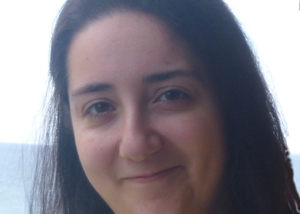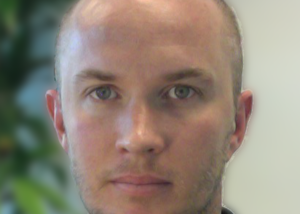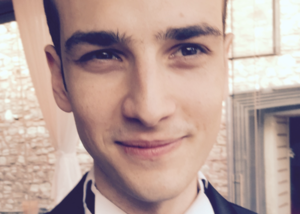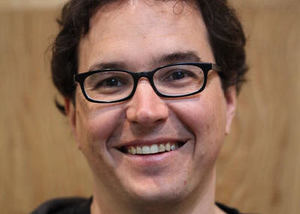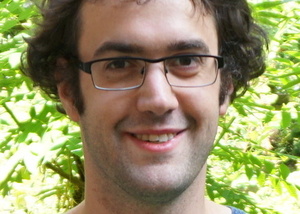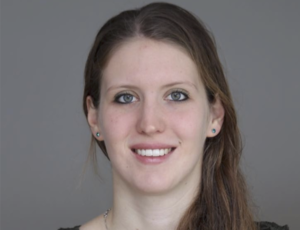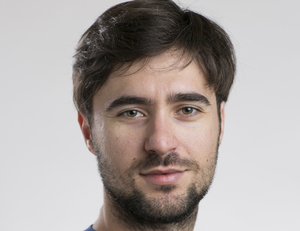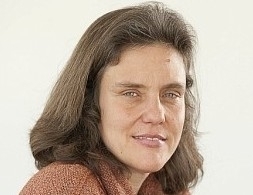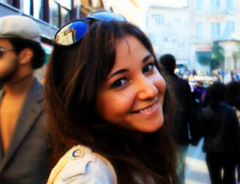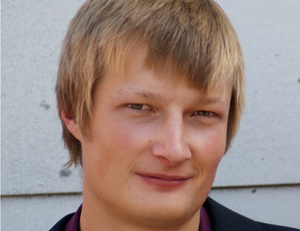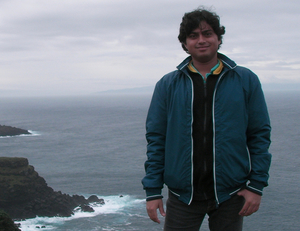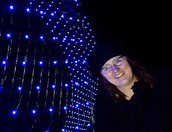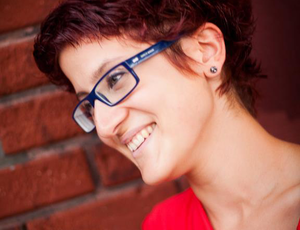Events & Talks
Perceiving Systems
Talk
Prof. Dr. Hedvig Kjellström
10-12-2018
Recognizing the Pain Expressions of Horses
Recognition of pain in horses and other animals is important, because pain is a manifestation of disease and decreases animal welfare. Pain diagnostics for humans typically includes self-evaluation and location of the pain with the help of standardized forms, and labeling of the pain by an clinical expert using pain scales. However, animals cannot verbalize their pain as humans can, and the use of standardized pain scales is challenged by the fact that animals as horses and cattle, being prey animals, display subtle and less obvious pain behavior - it is simply beneficial for a prey animal ...
Perceiving Systems
Talk
Umar Iqbal
27-11-2018
Articulated Human Pose Estimation from Unconstrained Images and Videos
In this talk, I will present an overview of my Ph.D. research towards articulated human pose estimation from unconstrained images and videos. In the first part of the talk, I will present an approach to jointly model multi-person pose estimation and tracking in a single formulation. The approach represents body joint detections in a video by a spatiotemporal graph and solves an integer linear program to partition the graph into sub-graphs that correspond to plausible body pose trajectories for each person. I will also introduce the PoseTrack dataset and benchmark which is now the de-facto s...
Dimitris Tzionas
Perceiving Systems
Talk
Prof. Dr. Stefan Roth
02-11-2018
Deep Learning with Perceptually-Motivated and Probabilistic Networks
Supervised learning with deep convolutional networks is the workhorse of the majority of computer vision research today. While much progress has been made already, exploiting deep architectures with standard components, enormous datasets, and massive computational power, I will argue that it pays to scrutinize some of the components of modern deep networks. I will begin with looking at the common pooling operation and show how we can replace standard pooling layers with a perceptually-motivated alternative, with consistent gains in accuracy. Next, I will show how we can leverage self-simila...
Michael Black
Perceiving Systems
Talk
Dima Damen
30-10-2018
A fine-grained perspective onto object interactions
This talk aims to argue for a fine-grained perspective onto human-object interactions, from video sequences. I will present approaches for the understanding of ‘what’ objects one interacts with during daily activities, ‘when’ should we label the temporal boundaries of interactions, ‘which’ semantic labels one can use to describe such interactions and ‘who’ is better when contrasting people perform the same interaction. I will detail my group’s latest works on sub-topics related to: (1) assessing action ‘completion’ – when an interaction is attempted but not completed [BMVC 2018], (2) determ...
Mohamed Hassan
Perceiving Systems
Talk
Iasonas Kokkinos
24-09-2018
Learning to align images and surfaces
In this talk I will be presenting recent work on combining ideas from deformable models with deep learning. I will start by describing DenseReg and DensePose, two recently introduced systems for establishing dense correspondences between 2D images and 3D surface models ``in the wild'', namely in the presence of background, occlusions, and multiple objects. For DensePose in particular we introduce DensePose-COCO, a large-scale dataset for dense pose estimation, and DensePose-RCNN, a system which operates at multiple frames per second on a single GPU while handling multiple humans simultaneo...
Vassilis Choutas
Perceiving Systems
Talk
Richard Szeliski
07-09-2018
Visual Reconstruction and Image-Based Rendering
The reconstruction of 3D scenes and their appearance from imagery is one of the longest-standing problems in computer vision. Originally developed to support robotics and artificial intelligence applications, it has found some of its most widespread use in support of interactive 3D scene visualization.
One of the keys to this success has been the melding of 3D geometric and photometric reconstruction with a heavy re-use of the original imagery, which produces more realistic rendering than a pure 3D model-driven approach. In this talk, I give a retrospective of two decades of research in ...
Mohamed Hassan
Perceiving Systems
Talk
Jim Mainprice
27-07-2018
Imitation of Human Motion Planning
Humans act upon their environment through motion, the ability to plan their movements is therefore an essential component of their autonomy. In recent decades, motion planning has been widely studied in robotics and computer graphics. Nevertheless robots still fail to achieve human reactivity and coordination. The need for more efficient motion planning algorithms has been present through out my own research on "human-aware" motion planning, which aims to take the surroundings humans explicitly into account. I believe imitation learning is the key to this particular problem as it allows to ...
Perceiving Systems
Talk
Daniel Scharstein
24-07-2018
New Ideas for Stereo Matching of Untextured Scenes
Two talks for the price of one! I will present my recent work on the challenging problem of stereo matching of scenes with little or no surface texture, attacking the problem from two very different angles.
First, I will discuss how surface orientation priors can be added to the popular semi-global matching (SGM) algorithm, which significantly reduces errors on slanted weakly-textured surfaces. The orientation priors serve as a soft constraint during matching and can be derived in a variety of ways, including from low-resolution matching results and from monocular analysis and Manhatta...
Anurag Ranjan
Perceiving Systems
Talk
Rıza Alp Güler
16-07-2018
DensePose: Dense Human Pose Estimation In The Wild
Non-planar object deformations result in challenging but informative signal variations. We aim to recover this information in a feedforward manner by employing discriminatively trained convolutional networks. We formulate the task as a regression problem and train our networks by leveraging upon manually annotated correspondences between images and 3D surfaces. In this talk, the focus will be on our recent work "DensePose", where we form the "COCO-DensePose" dataset by introducing an efficient annotation pipeline to collect correspondences between 50K persons appearing in the COCO dataset a...
Georgios Pavlakos
Perceiving Systems
Talk
Elena Balashova (Sizikova)
03-07-2018
Structure-Aware Shape Synthesis
Complex shapes can can be summarized using
a coarsely defined structure which is consistent
and robust across variety of observations. However,
existing synthesis techniques do not consider structural decomposition
during synthesis, causing generation of implausible or
structurally unrealistic shapes. We explore how structure-aware
reasoning can benefit existing generative techniques for
complex 2D and 3D shapes. We evaluate our methodology on
a 3D dataset of chairs and a 2D dataset of typefaces.
Sergi Pujades
Perceiving Systems
IS Colloquium
Prof. Javier Cudeiro
08-06-2018
Lessons from the visual system to understand (and help) the brain
Visual perception involves a complex interaction between feedforward and feedback processes. A mechanistic understanding of these processing, and its limitations, is a necessary first step towards elucidating key aspects of perceptual functions and dysfunctions.
In this talk, I will review our ongoing effort towards the understanding of how feedback visual processing operates at the level of the thalamus, a dynamic relay station halfway between the retina and the cortex. I will present experimental evidence from several recent electrophysiology studies performed on subjects engaged in ...
Daniel Cudeiro
Perceiving Systems
IS Colloquium
Thabo Beeler
25-05-2018
Digital Humans At Disney Research
Disney Research has been actively pushing the state-of-the-art in digitizing humans over the past decade, impacting both academia and industry. In this talk I will give an overview of a selected few projects in this area, from research into production. I will be talking about photogrammetric shape acquisition and dense performance capture for faces, eye and teeth scanning and parameterization, as well as physically based capture and modelling for hair and volumetric tissues.
Timo Bolkart
Perceiving Systems
Talk
JP Lewis
27-04-2018
Constructing Artificial Characters - Traditional versus Deep Learning Approaches
The definition of art has been debated for more than 1000 years, and continues to be a puzzle. While scientific investigations offer hope of resolving this puzzle, machine learning classifiers that discriminate art from non-art images generally do not provide an explicit definition, and brain imaging and psychological theories are at present too coarse to provide a formal characterization. In this work, rather than approaching the problem using a machine learning approach trained on existing artworks, we hypothesize that art can be defined in terms of preexisting properties of the visual co...
Michael Black
Perceiving Systems
Talk
Dr. Cordelia Schmid
26-04-2018
Automatic Understanding of the Visual World
One of the central problems of artificial intelligence is machine perception, i.e., the ability to understand the visual world based on input from sensors such as cameras. In this talk, I will present recent progress with respect to data generation using weak annotations, motion information and synthetic data. I will also discuss our recent results for action recognition, where human tubes and tubelets have shown to be successful. Our tubelets moves away from state-of-the-art frame based approaches and improve classification and localization by relying on joint information from several fram...
Ahmed Osman
Perceiving Systems
Talk
Alexander Mathis
17-04-2018
Markerless Tracking of User-Defined Features with Deep Learning
Quantifying behavior is crucial for many applications in neuroscience. Videography provides easy methods for the observation and recording of animal behavior in diverse settings, yet extracting particular aspects of a behavior for further analysis can be highly time consuming. In motor control studies, humans or other animals are often marked with reflective markers to assist with computer-based tracking, yet markers are intrusive (especially for smaller animals), and the number and location of the markers must be determined a priori. Here, we present a highly efficient method for markerles...
Melanie Feldhofer
Perceiving Systems
Talk
Gül Varol
10-04-2018
BodyNet: Volumetric Inference of 3D Human Body Shapes
Human shape estimation is an important task for video editing, animation and fashion industry. Predicting 3D human body shape from natural images, however, is highly challenging due to factors such as variation in human bodies, clothing and viewpoint. Prior methods addressing this problem typically attempt to fit parametric body models with certain priors on pose and shape. In this work we argue for an alternative representation and propose BodyNet, a neural network for direct inference of volumetric body shape from a single image. BodyNet is an end-to-end trainable network that benefits fr...
Perceiving Systems
Talk
Omar Costilla Reyes
28-03-2018
Deep Residual Neural Networks for Robust Footstep Recognition
Human footsteps can provide a unique behavioural pattern for robust biometric systems. Traditionally, security systems have been based on passwords or security access cards. Biometric recognition deals with the design of security systems for automatic identification or verification of a human subject (client) based on physical and behavioural characteristics. In this talk, I will present spatio-temporal raw and processed footstep data representations designed and evaluated on deep machine learning models based on a two-stream resnet architecture, by using the SFootBD database the largest f...
Dimitris Tzionas
Perceiving Systems
Talk
Silvia Zuffi
27-03-2018
Capturing animal 3D articulated shape and appearance from images
Animals are widespread in nature and the analysis of their shape and motion is of importance in many fields and industries.
Modeling 3D animal shape, however, is difficult because the 3D scanning methods used to capture human shape are not applicable to wild animals or natural settings.
In our previous SMAL model, we learn animal shape from toys figurines, but toys are limited in number and realism, and not every animal is sufficiently popular for there to be realistic toys depicting it. What is available in large quantities are images and videos of animals from nature photographs, anim...
Perceiving Systems
Talk
Prof. Constantin Rothkopf
28-02-2018
Perception and action are inseparably intertwined: computational and experimental evidence
Active vision has long put forward the idea, that visual sensation and our actions are inseparable, especially when considering naturalistic extended behavior. Further support for this idea comes from theoretical work in optimal control, which demonstrates that sensing, planning, and acting in sequential tasks can only be separated under very restricted circumstances. The talk will present experimental evidence together with computational explanations of human visuomotor behavior in tasks ranging from classic psychophysical detection tasks to ball catching and visuomotor navigation. Along t...
Betty Mohler
Perceiving Systems
Talk
Alexander Hewer
20-02-2018
Deriving a Tongue Model from MRI Data
The tongue plays a vital part in everyday life where we use it extensively during speech production.
Due to this importance, we want to derive a parametric shape model of the tongue.
This model enables us to reconstruct the full tongue shape from a sparse set of points, like for example motion capture data.
Moreover, we can use such a model in simulations of the vocal tract to perform articulatory speech synthesis or to create animated virtual avatars.
In my talk, I describe a framework for deriving such a model from MRI scans of the vocal tract.
In particular, this framework uses im...
Timo Bolkart
Perceiving Systems
Symposium
29-10-2017
- 01-11-2017
Scenes from Video III
This is the third in a series of invitation-only workshops held after ICCV. SfV brings together experts on image and video understanding, machine learning, and 3D scene analysis. In so doing, we hope to draw several lines of research together to address the problem of extracting both physical and semantic information from video.
Michael Black
Perceiving Systems
Talk
Yeara Kozlov
23-08-2017
Physical Blendshapes - Controllable Physics for Human Faces
Creating convincing human facial animation is challenging. Face animation is often hand-crafted by artists separately from body motion. Alternatively, if the face animation is derived from motion capture, it is typically performed while the actor is relatively still. Recombining the isolated face animation with body motion is non-trivial and often results in uncanny results if the body dynamics are not properly reflected on the face (e.g. cheeks wiggling when running).
In this talk, I will discuss the challenges of human soft tissue simulation and control. I will then present our method ...
Timo Bolkart
Perceiving Systems
Talk
Seong Joon Oh
22-06-2017
From understanding to controlling privacy against automatic person identification
Growth of the internet and social media has spurred the sharing and dissemination of personal data at large scale. At the same time, recent developments in computer vision has enabled unseen effectiveness and efficiency in automated recognition. It is clear that visual data contains private information that can be mined, yet the privacy implications of sharing such data have been less studied in computer vision community. In the talk, I will present some key results from our study of the implications of the development of computer vision on the identifiability in social media, and an analys...
Siyu Tang
Perceiving Systems
Talk
Nadine Rüegg
06-06-2017
From Camera Synchronization to Deep Learning
We transfer a monocular motion stereo 3D reconstruction algorithm from a mobile device (Google Project Tango Tablet) to a rigidly mounted external camera of higher image resolution. A reliable camera synchronization is crucial for the usability of the tablets IMU data and thus a time synchronization method developed. It is based on the joint movement of the cameras.
In a second project, we move from outdoor video scenes to aerial images and strive to segment them into polygonal shapes. While most existing approaches address the problem of automated generation of online maps as a pixel-wise...
Siyu Tang
Perceiving Systems
Talk
Partha Ghosh
31-05-2017
Human Motion Models
We propose a new architecture for the learning of predictive spatio-temporal motion models from data alone.
Our approach, dubbed the Dropout Autoencoder LSTM, is
capable of synthesizing natural looking motion sequences
over long time horizons without catastrophic drift or mo-
tion degradation. The model consists of two components,
a 3-layer recurrent neural network to model temporal aspects and a novel auto-encoder that is trained to implicitly recover the spatial structure of the human skeleton via
randomly removing information about joints during train-
ing time. This Dropout Autoe...
Gerard Pons-Moll
Perceiving Systems
Talk
Endri Dibra
30-05-2017
3D shape from monocular images with data-driven priors
Estimating 3D shape from monocular 2D images is a challenging and ill-posed problem. Some of these challenges can be alleviated if 3D shape priors are taken into account. In the field of human body shape estimation, research has shown that accurate 3D body estimations can be achieved through optimization, by minimizing error functions on image cues, such as e.g. the silhouette. These methods though, tend to be slow and typically require manual interactions (e.g. for pose estimation). In this talk, we present some recent works that try to overcome such limitations, achieving interactive rate...
Gerard Pons-Moll
Perceiving Systems
Talk
Sven Dickinson
29-05-2017
The Perceptual Advantage of Symmetry for Scene Perception
Human observers can classify photographs of real-world scenes after only a very brief exposure to the image (Potter & Levy, 1969; Thorpe, Fize, Marlot, et al., 1996; VanRullen & Thorpe, 2001). Line drawings of natural scenes have been shown to capture essential structural information required for successful scene categorization (Walther et al., 2011). Here, we investigate how the spatial relationships between lines and line segments in the line drawings affect scene classification. In one experiment, we tested the effect of removing either the junctions or the middle segments between juncti...
Ahmed Osman
Perceiving Systems
Talk
Yael Moses
24-05-2017
Dynamic Scene Analysis Using CrowdCam Data
Dynamic events such as family gatherings, concerts or sports events are often photographed by a group of people. The set of still images obtained this way is rich in dynamic content. We consider the question of whether such a set of still images, rather the traditional video sequences, can be used for analyzing the dynamic content of the scene. This talk will describe several instances of this problem, their solutions and directions for future studies.
In particular, we will present a method to extend epipolar geometry to predict location of a moving feature in CrowdCam images. The method ...
Jonas Wulff
Perceiving Systems
Talk
Cordelia Schmid
19-05-2017
Learning to segment moving objects
This talk addresses the task of segmenting moving objects in unconstrained videos. We introduce a novel two-stream neural network with an explicit memory module to achieve this. The two streams of the network encode spatial and temporal features in a video sequence respectively, while the memory module captures the evolution of objects over time. The module to build a “visual memory” in video, i.e., a joint representation of all the video frames, is realized with a convolutional recurrent unit learned from a small number of training video sequences. Given video frames as input, our approach...
Osman Ulusoy
Perceiving Systems
Talk
Björn Andres
08-05-2017
Graph Decomposition Problems in Image Analysis
A large part of image analysis is about breaking things into pieces. Decompositions of a graph are a mathematical abstraction of the possible outcomes. This talk is about optimization problems whose feasible solutions define decompositions of a graph. One example is the correlation clustering problem whose feasible solutions relate one-to-one to the decompositions of a graph, and whose objective function puts a cost or reward on neighboring nodes ending up in distinct components. This talk shows applications of this problem and proposed generalizations to diverse image analysis tasks. It sk...
Christoph Lassner
Perceiving Systems
Talk
Gul Varol
04-05-2017
Learning from Synthetic Humans
Estimating human pose, shape, and motion from images and video are fundamental challenges with many applications. Recent advances in 2D human pose estimation use large amounts of manually-labeled training data for learning convolutional neural networks (CNNs). Such data is time consuming to acquire and difficult to extend. Moreover, manual labeling of 3D pose, depth and motion is impractical. In this work we present SURREAL: a new large-scale dataset with synthetically-generated but realistic images of people rendered from 3D sequences of human motion capture data. We generate more than 6 m...
Dimitris Tzionas
Perceiving Systems
Talk
Yanxi Liu
13-04-2017
Dancing with TURKs or Tai Chi with a Master?
From gait, dance to martial art, human movements provide rich, complex yet coherent spatiotemporal patterns reflecting characteristics of a group or an individual. We develop computer algorithms to automatically learn such quality discriminative features from multimodal data. In this talk, I present a trilogy on learning from human movements:
(1) Gait analysis from video data: based on frieze patterns (7 frieze groups), a video sequence of silhouettes is mapped into a pair of spatiotemporal patterns that are near-periodic along the time axis. A group theoretical analysis of periodic pat...
Laura Sevilla
Siyu Tang
Perceiving Systems
Talk
Silvia Zuffi
07-04-2017
Building Multi-Family Animal Models
There has been significant prior work on learning realistic, articulated, 3D statistical shape models of the human body.
In contrast, there are few such models for animals, despite their many applications in biology, neuroscience, agriculture, and entertainment.
The main challenge is that animals are much less cooperative subjects than humans: the best human body models are learned from thousands of 3D scans of people in specific poses, which is infeasible with live animals.
In the talk I will illustrate how we extend a state-of-the-art articulated 3D human body model (SMPL) to animals ...
Perceiving Systems
Talk
Kathleen Robinette
05-12-2016
Modeling Opportunities for Effective Product Development & Sizing
Kathleen is the creator of the well-known CAESAR anthropomorphic dataset and is an expert on body shape and apparel fit.
Javier Romero
Perceiving Systems
Talk
Hedvig Kjellström
27-10-2016
Factorized Latent Representations for Improved Automated Diagnostics
In this talk I will first outline my different research projects. I will then focus on one project with applications in Health, and introduce the Inter-Battery Topic Model (IBTM). Our approach extends traditional topic models by learning a factorized latent variable representation. The structured representation leads to a model that marries benefits traditionally associated with a discriminative approach, such as feature selection, with those of a generative model, such as principled regularization and ability to handle missing data. The factorization is provided by representing data in ter...
Perceiving Systems
Talk
Siyu Tang
25-08-2016
Graph decomposition for multi-person tracking, pose estimation and motion segmentation
Understanding people in images and videos is a problem studied intensively in computer vision. While continuous progress has been made, occlusions, cluttered background, complex poses and large variety of appearance remain challenging, especially for crowded scenes. In this talk, I will explore the algorithms and tools that enable computer to interpret people's position, motion and articulated poses in the real-world challenging images and videos.More specifically, I will discuss an optimization problem whose feasible solutions define a decomposition of a given graph. I will highlight the a...
Naureen Mahmood
Perceiving Systems
Talk
Dimitris Tzionas
04-08-2016
Capturing Hand-Object Interaction and Reconstruction of Manipulated Objects
Hand motion capture with an RGB-D sensor gained recently a lot of research attention, however even most recent approaches focus on the case of a single isolated hand. We focus instead on hands that interact with other hands or with a rigid or articulated object. Our framework successfully captures motion in such scenarios by combining a generative model with discriminatively trained salient points, collision detection and physics simulation to achieve a low tracking error with physically plausible poses. All components are unified in a single objective function that can be optimized with st...
Javier Romero
Perceiving Systems
Talk
Timo Bolkart
09-06-2016
Dynamic and Groupwise Statistical Analysis of 3D Faces
The accurate reconstruction of facial shape is important for applications such as telepresence and gaming. It can be solved efficiently with the help of statistical shape models that constrain the shape of the reconstruction.
In this talk, several methods to statistically analyze static and dynamic 3D face data are discussed. When statistically analyzing faces, various challenges arise from noisy, corrupt, or incomplete data. To overcome the limitations imposed by the poor data quality, we leverage redundancy in the data for shape processing. This is done by processing entire motion seq...
Perceiving Systems
Talk
Cordelia Schmid
21-04-2016
Pose-based human action recognition.
In this talk we present some recent results on human action recognition in videos. We, first, show how to use human pose for action recognition. To this end we propose a new pose-based convolutional neural network descriptor for action recognition, which aggregates motion and appearance information along tracks of human body parts. Next, we present an approach for spatio-temporal action localization in realistic videos. The approach first detects proposals at the frame-level and then tracks high-scoring proposals in the video. Our tracker relies simultaneously on instance-level and class-le...
Perceiving Systems
Talk
Gül Varol
12-04-2016
Long-term Temporal Convolutions for Action Recognition
Typical human actions such as hand-shaking and drinking last several seconds and exhibit characteristic spatio-temporal structure. Recent methods attempt to capture this structure and learn action representations with convolutional neural networks. Such representations, however, are typically learned at the level of single frames or short video clips and fail to model actions at their full temporal scale. In this work we learn video representations using neural networks with long-term temporal convolutions. We demonstrate that CNN models with increased temporal extents improve the accuracy ...
Perceiving Systems
Talk
Helge Rhodin
08-04-2016
Ray Tracing for Computer Vision
Proper handling of occlusions is a big challenge for model based reconstruction, e.g. for multi-view motion capture a major difficulty is the handling of occluding body parts.
We propose a smooth volumetric scene representation, which implicitly converts occlusion into a smooth and differentiable phenomena (ICCV2015).
Our ray tracing image formation model helps to express the objective in a single closed-form expression.
This is in contrast to existing surface(mesh) representations, where occlusion is a local effect, causes non-differentiability, and is difficult to optimize.
We demon...
Perceiving Systems
Talk
Aamir Ahmad
05-04-2016
Multirobot Cooperative State Estimation - towards Scalability and Active Perception
The core focus of my research is on robot perception. Within this broad categorization, I am mainly interested in understanding how teams of robots and sensors can cooperate and/or collaborate to improve the perception of themselves (self-localization) as well as their surroundings (target tracking, mapping, etc.). In this talk I will describe the inter-dependencies of such perception modules and present state-of-the-art methods to perform unified cooperative state estimation. The trade-off between accuracy of estimation and computational speed will be highlighted through a new optimization...
Perceiving Systems
Talk
Valsamis Ntouskos
04-04-2016
Regularization and Statistical Inverse Problems in Shape and Motion Modeling
Modeling and reconstruction of shape and motion are problems of fundamental importance in computer vision. Inverse Problem theory constitutes a powerful mathematical framework for dealing with ill-posed problems as the ones typically arising in shape and motion modeling.
In this talk, I will present methods inspired by Inverse Problem theory, for dealing with four different shape and motion modeling problems. In particular, in the context of shape modeling, I will present a method for component-wise modeling of articulated objects and its application in computing 3D models of anim...
Perceiving Systems
Talk
Lars Mescheder
03-03-2016
From image restoration to image understanding
Inverse problems are ubiquitous in image processing and applied science in general. Such problems describe the challenge of computing the parameters that characterize a system from the outcomes. While this might seem easy at first for simple systems, many inverse problems share a property that makes them much more intricate: they are ill-posed. This means that either the problem does not have a unique solution or this solution does not depend continuously on the outcomes of the system. Bayesian statistics provides a framework that allows to treat such problems in a systematic way. The missi...
Perceiving Systems
Talk
Helga Griffiths
24-02-2016
Interaction of Science and Art
In general Helga Griffiths is a Multi-Sense-Artist working on the intersection of science and art. She has been working for over 20 years on the integration of various sensory stimuli into her “multi-sense” installations. Typical for her work is to produce a sensory experience to transcend conventional boundaries of perception.
Emma-Jayne Holderness
Perceiving Systems
Talk
Prof. David W. Jacobs
10-11-2015
Understanding Plants and Animals
I will describe a series of work that aims to automatically understand images of animals and plants. I will begin by describing recent work that uses Bounded Distortion matching to model pose variation in animals. Using a generic 3D model of an animal and multiple images of different individuals in various poses, we construct a model that captures the way in which the animal articulates. This is done by solving for the pose of the template that matches each image while simultaneously solving for the stiffness of each tetrahedron of the model. We minimize an L1 norm on stiffness, produci...
Stephan Streuber
Perceiving Systems
Talk
Olga Diamanti
28-10-2015
Design of Tangent Vector-Set Fields using Polynomials
The design of tangent vector fields on discrete surfaces is a basic building block for many geometry processing applications, such as surface remeshing, parameterization and architectural geometric design. Many applications require the design of multiple vector fields (vector sets) coupled in a nontrivial way; for example, sets of more than two vectors are used for meshing of triangular, quadrilateral and hexagonal meshes. In this talk, a new, polynomial-based representation for general unordered vector sets will be presented. Using this representation we can efficiently interpolate user pr...
Gerard Pons-Moll
Perceiving Systems
Talk
Max Welling
19-10-2015
Learning to generate
The recent amazing success of deep learning has been mainly in discriminative learning, that is, classification and regression. An important factor for this success has been, besides Moore's law, the availability of large labeled datasets. However, it is not clear whether in the future the amount of available labels grows as fast as the amount of unlabeled data, providing one argument to be interested in unsupervised and semi-supervised learning.
Besides this there are a number of other reasons why unsupervised learning is still important, such as the fact that data in the life sciences ...
Peter Vincent Gehler
Perceiving Systems
Talk
Lilla LoCurto and Bill Outcalt
21-09-2015
"Artist" Talk
Lilla and Bill are two returning artists to Perceiving Systems. Their talk will update us on the exciting projects that they’ve been involved with since their last visit and to present some of their current plans that will unfold during the week (Sept 21st - 25th). They will be joining our department and working with professional dancers in the 4D scanner as part of an art project on mental health.
In general, Lilla and Bill have been using 3D captures as an artistic tool to visualize the human body in a contemporary form for some time. They produce marionettes or avatars which can be se...
Emma-Jayne Holderness



